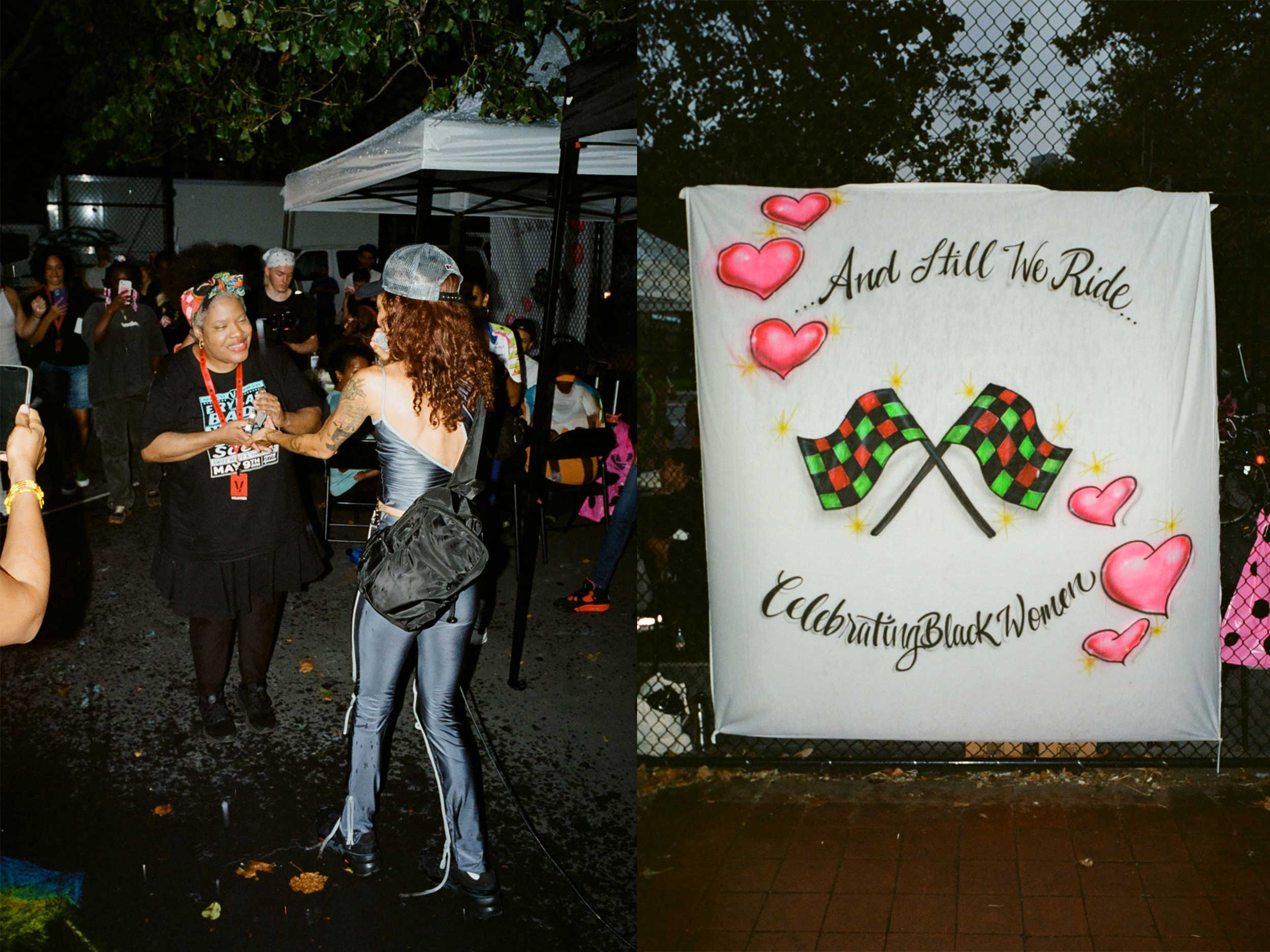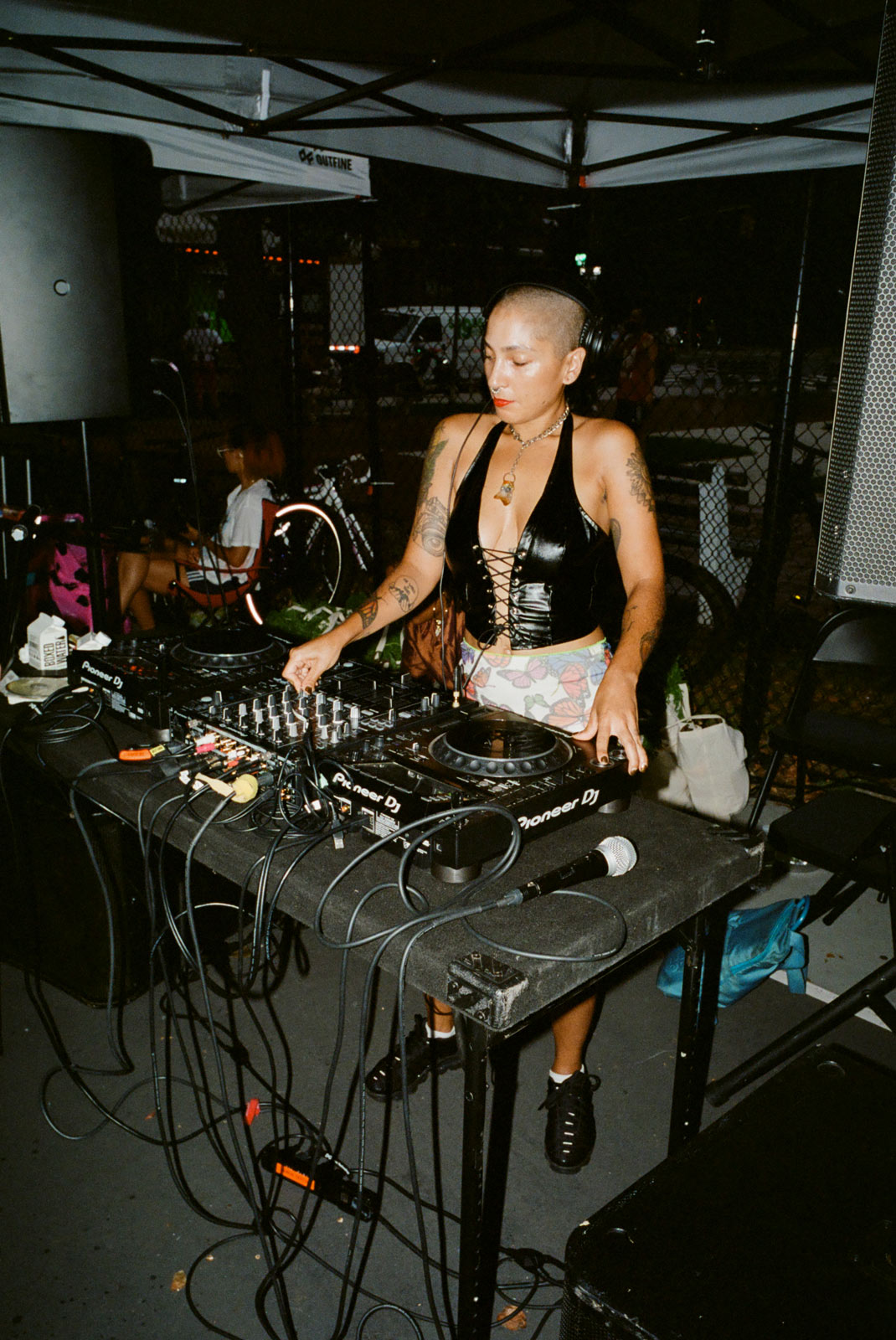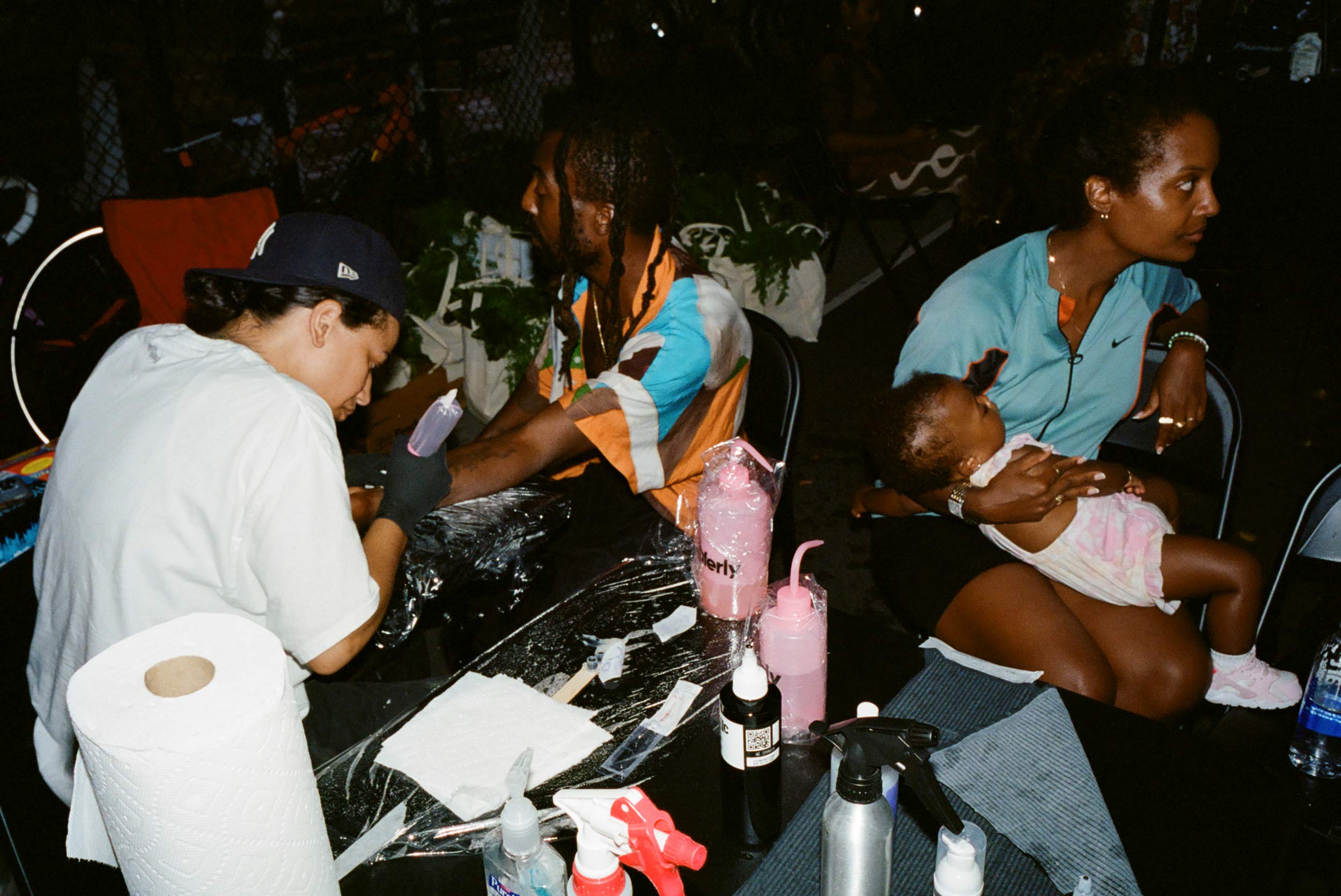In the afterglow of And Still We Ride’s fourth annual New York tour, the founder speaks on its mission of putting Black community first
In 2020, Marz Lovejoy founded And Still We Ride—an annual parade of hundreds of the city’s best-dressed bikers, overtaking New York’s streets in the name of community and collective resistance. “Supporting Black women is the mission,” she told Document. Biking is simply the vehicle. But there is an inherent power to taking up space in a crowded metropolis, which this particular sport can foster: interrupting business as usual, garnering looks, going the distance. “That kind of freedom is incredibly important. Not only is it activating the body and senses, but it also lends a spiritual and mental independence that is crucial for Black and Brown people.”
Last weekend, Lovejoy hosted ASWR’s fourth iteration, building on the $15k they’ve raised so far for organizations centering Black women’s health, like Mama Glow, Glits Inc., and Black Women’s Blueprint. “This year was much more official, with a Parks & Rec permit and bike loans for folks in need,” she said on the ride’s evolution. “But the essence has [always] been community-oriented. For the people, by the people.” An event of this scale is no easy feat—but the work Lovejoy and her team put in directly correlates to their presence on the road: “It’s cross-generational and multi-cultural, [breaking] economic, racial, and regional barriers. When we ride, we are one.”
Here, Document catches up with Lovejoy, picking her brain on And Still We Ride’s come-up, and where it’ll go from here.
Jody Bain: And Still We Ride is going into its fourth year. How has it grown since its founding?
Marz Lovejoy: In so many ways. It started out very DIY, with myself and my partner Angie Chavez doing most of the legwork. Kim Dillard was my first official volunteer and has helped me with every rideout since. This year was much more official, with a Parks & Rec permit and bike loans for folks in need. But the essence has [always] been community-oriented. For the people, by the people.
Jody: Style and sport are intrinsically linked. What do you think sets the biker’s aesthetic apart?
Marz: When riding a bike, you have to be mindful of function and logistics—so your style choices have to be intentional. Wearing the heavy gold chain may or may not be the move.
But style also presents itself in the way you ride. It’s how you switch lanes, how you—and your crew—take over the streets, how you show love to your fellow riders. That’s why I love biking so much. It’s a universal language and love.
Jody: Biking’s been a constant in your life. Can you talk about your earliest exposure to it, and what the sport has done for you?
Marz: Since I can remember, I’ve always had a bike. I remember biking freely in the streets with my cousins as a kid. Whether I was being toted around or riding my cousins on pegs, we were outside. That kind of freedom is incredibly important. Not only is it activating the body and senses, but it also lends a spiritual and mental independence that is crucial for Black and Brown people.
“It’s how you switch lanes, how you take over the streets, how you show love to your fellow riders. That’s why I love biking so much. It’s a universal language and love.”
Jody: And Still We Ride is named after the Maya Angelou poem, ‘Still I Rise.’ What about that
work resonated with you?
Marz: Similarly to how Earth, Wind & Fire, Shel Silverstein, and shea butter have been legendary staples for me from an early age, ‘Still I Rise’ was a household poem. I can’t pinpoint how or when it was introduced to me, but it was always around. I think the organic nature of how it folded into my life is what resonates most.
Jody: Are there any other inspirations behind ASWR’s mission, outside of the athletic realm?
Marz: Absolutely. The communal and social giveback elements are more important than the athletics. Supporting Black women is the mission. The biking is just a vehicle through which the message is relayed.
Jody: What’s your favorite kind of moment to witness during a rideout?
Marz: I love that my rideouts bring out so many different walks of life—from pro BMX riders, to Bike Life wheelie riders, to people who don’t even own a bike. It’s cross-generational and multi-cultural, [breaking] economic, racial, and regional barriers. When we ride, we are one.
Jody: Does any particular ASWR memory—whether your own, or one that someone else recounted to you—stand out as emblematic to your mission?
Marz: Taking over the Williamsburg Bridge—where the cars drive—with 400 bikers for my first rideout was definitely a standout memory. Once you have that experience, you’ll hold it forever. I also rode 30 miles while I was four months pregnant for my second rideout, which felt like a major accomplishment.
And, of course, hearing the kind, heartfelt things people have to say after the ride always fills my soul. I never know how much of an impact something has until the people remind me. I love that.
Jody: What do you see in And Still We Ride’s future?
Marz: I’d like to take ASWR international. We’ve already had a rideout in Baltimore, and people in LA and other cities have been asking me to pull up. Maybe in the next couple of years, we’ll hit up Asmara, Amsterdam, London, Barcelona, or Lagos.





























